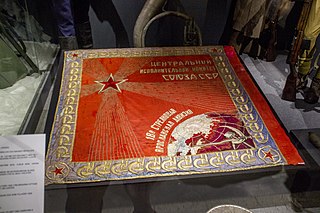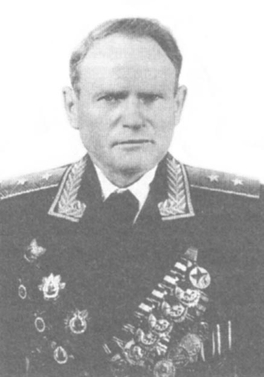A rifle corps was a Soviet corps-level military formation during the mid-twentieth century. Rifle corps were made up of a varying number of rifle divisions, although the allocation of three rifle divisions to a rifle corps was common during the latter part of World War II.
The 78th Rifle Division was an infantry division of the Red Army, formed in 1932, in Novosibirsk, in the Siberian Military District. After being used to provide cadres for new divisions, in September 1939 the division was reformed for the second time. In 1940 the division was transferred to Khabarovsk in the Far Eastern Front.

The 18th Rifle Division was an infantry division of the Soviet Union's Red Army during the Russian Civil War, Polish–Soviet War, Winter War and World War II. The division was formed a total of five times during this period.
The 6th Guards Airborne Division was a Red Army airborne division that fought as infantry during World War II.
The 36th Rifle Division was a division of the Red Army and then the Soviet Army. The division was formed in 1919 as the 36th Rifle Division and fought in the Russian Civil War and the Sino-Soviet conflict of 1929. In 1937 it became the 36th Motorized Division. The division fought in the Battles of Khalkhin Gol. It was converted into a motor rifle division in 1940 and fought in the Soviet invasion of Manchuria in World War II. Postwar, it became a rifle division again before its disbandment in 1956. The division spent almost its entire service in the Soviet Far East.

Dmitry Platonovich Onuprienko was a Soviet Army lieutenant general and Hero of the Soviet Union. Onuprienko fought during World War II at the Battle of Moscow, the Battle of Kursk and the Battle of Berlin. He commanded several corps after the war.
The 166th Rifle Division was an infantry division of the Soviet Union's Red Army that fought in World War II, formed twice. The division's first formation was formed in 1939 and wiped out in the Vyazma Pocket in October 1941. In January 1942, the division reformed. It fought in the Battle of Demyansk, the Battle of Kursk, Belgorod-Khar'kov Offensive Operation, Vitebsk–Orsha Offensive, Polotsk Offensive, Šiauliai Offensive, Riga Offensive and the Battle of Memel. It was awarded the Order of the Red Banner.
The 287th Rifle Division was an infantry division of the Soviet Union's Red Army during World War II, formed twice. It was first formed in the summer of 1941 and destroyed in the Bryansk pocket in the fall of 1941. The division was reformed in late December, including elements of the first formation, and served throughout the war before being disbanded in the summer of 1945.
The 280th Rifle Division was an infantry division of the Soviet Union's Red Army during World War II, formed twice. It was first formed in the summer of 1941 and destroyed in the Bryansk pocket in the fall of 1941. The division was reformed in late December, and served throughout the war before being disbanded in 1946.
The 277th Rifle Division was an infantry division of the Soviet Union's Red Army and later the Soviet Army, formed twice.
The 269th Rifle Division was an infantry division of the Soviet Union's Red Army during World War II.
The 260th Rifle Division was an infantry division of the Red Army during World War II, formed twice.

Vasily Stepanovich Rakovsky was a Soviet Army major general.

Nikolay Andreyevich Prishchepa was a Ukrainian Red Army major general killed in World War II.
The 84th Rifle Division was an infantry division of the Red Army before and during World War II.
The 213th Rifle Division was formed as an infantry division of the Red Army during World War II after a motorized division of that same number was destroyed about seven weeks following the start of the German invasion of the Soviet Union.

Filipp Feodosyevich Zhmachenko was a Soviet Army colonel general and Hero of the Soviet Union.
The 121st Rifle Division was an infantry division of the Red Army during World War II.

Andrey Yevseyevich Chekharin was a Red Army colonel killed in World War II.

Nikolay Aleksandrovich Nikitin was a Soviet Army lieutenant general who held corps and division command during World War II.






